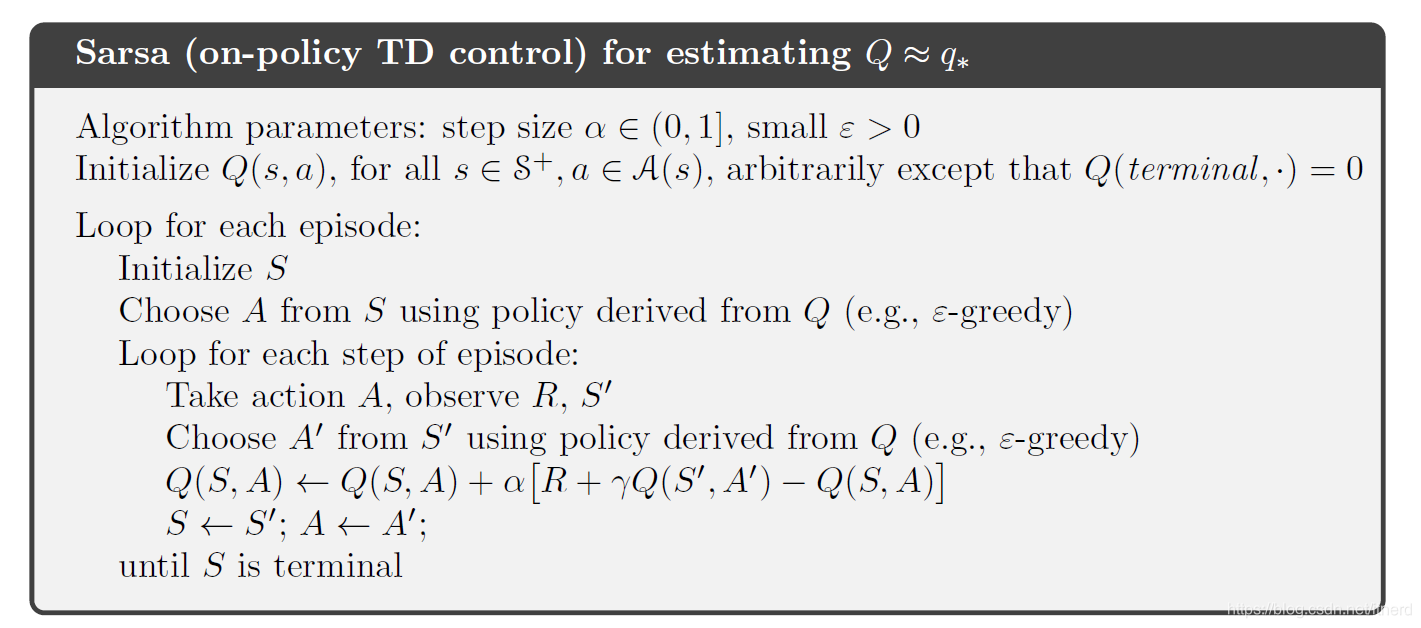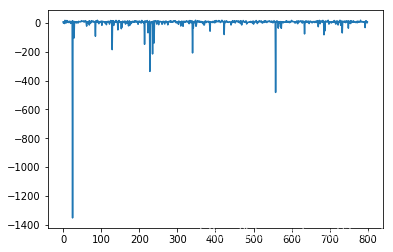
import matplotlib.pylab as plt
#%matplotlib inline
import random
import gym
env = gym.make('Taxi-v1')
env.render()
Q = {}
for s in range(env.observation_space.n):
for a in range(env.action_space.n):
Q[(s,a)] = 0.0
def epsilon_greedy(state, epsilon):
if random.uniform(0,1) < epsilon:
return env.action_space.sample()
else:
return max(list(range(env.action_space.n)), key = lambda x: Q[(state,x)])
alpha = 0.85
gamma = 0.90
epsilon = 1
R = []
for i in range(800):
# we store cumulative reward of each episodes in r
r = 0
# initialize the state,
state = env.reset()
# select the action using epsilon-greedy policy
action = epsilon_greedy(state,epsilon)
while True:
# env.render()
# then we perform the action and move to the next state, and receive the reward
nextstate, reward, done, _ = env.step(action)
# again, we select the next action using epsilon greedy policy
nextaction = epsilon_greedy(nextstate,max(0.01,epsilon/(i+1)))
# we calculate the Q value of previous state using our update rule
Q[(state,action)] += alpha * (reward + gamma * Q[(nextstate,nextaction)]-Q[(state,action)])
# finally we update our state and action with next action and next state
action = nextaction
state = nextstate
# store the rewards
r += reward
# we will break the loop, if we are at the terminal state of the episode
if done:
break
print("total reward: ", r)
R.append(r)
env.close()
plt.plot(R)
plt.show()

sarsa 和 Q-learning 的区别就在一个 max 上:
- 它们在采取实际动作时,都是用 ϵ−greedy\epsilon-greedyϵ−greedy 策略
- 在更新 Q 函数时,sarsa 仍采用 ϵ−greedy\epsilon-greedyϵ−greedy 策略得到下一个动作,而 Q-learning 使用的是 greedygreedygreedy 策略。基于这一点,称 sarsa 是 on-policy 的,而 Q-learning 是 off-policy 的。








 本文通过实现Taxi-v1环境中的SARSA算法,对比了SARSA与Q-Learning两种强化学习方法。两者都采用ϵ-greedy策略选取动作,但SARSA在更新Q值时继续采用该策略,而Q-Learning则采用贪婪策略。
本文通过实现Taxi-v1环境中的SARSA算法,对比了SARSA与Q-Learning两种强化学习方法。两者都采用ϵ-greedy策略选取动作,但SARSA在更新Q值时继续采用该策略,而Q-Learning则采用贪婪策略。

















 979
979

 被折叠的 条评论
为什么被折叠?
被折叠的 条评论
为什么被折叠?










